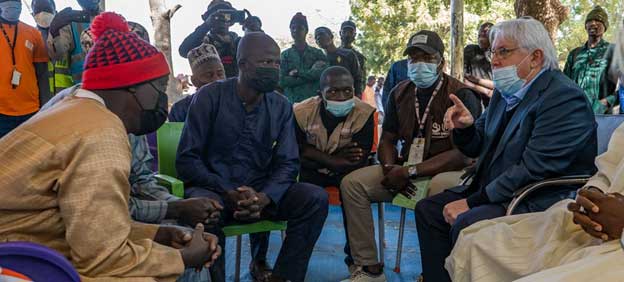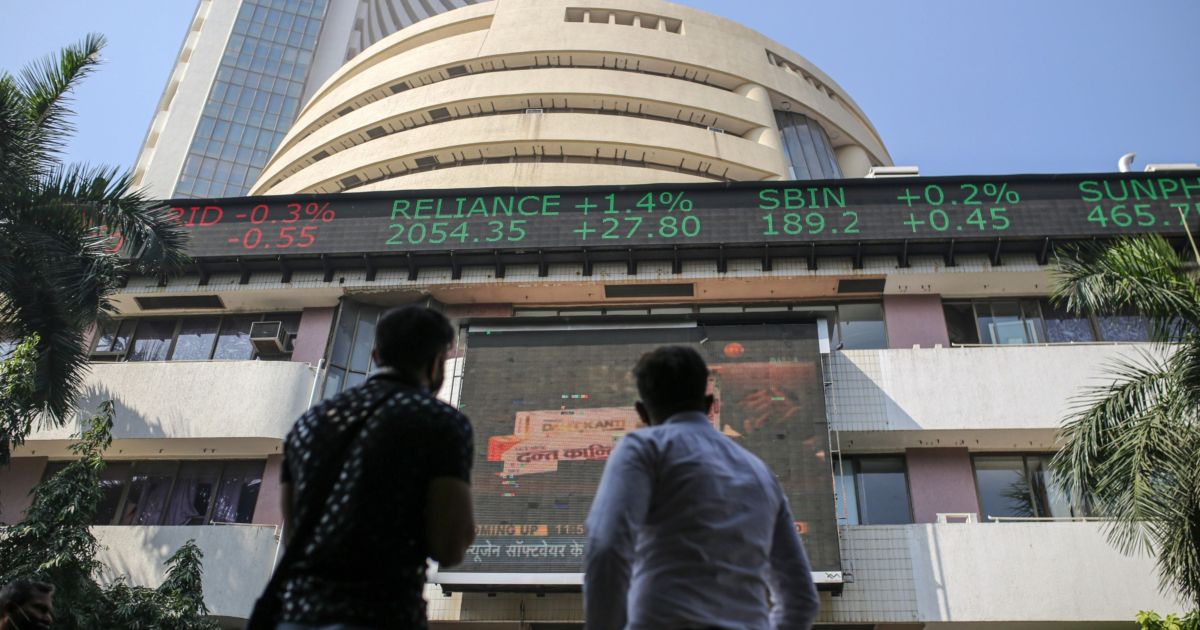[ad_1]
Local weather change and alarming ranges of biodiversity loss attributable to human actions are driving life on planet Earth to a harmful precipice, a probably dystopian future marked by huge extinction charges and international socioecological crises. With denialism now not a practical chance, governments, NGOs, and companies are eager to reveal their dedication to ‘sustainability.’ But wealth and power- the very buildings of the worldwide economy- are deeply entangled with the exploitation of assets and rampant ranges of waste and air pollution. Since its inception, capitalism itself has been rooted within the ceaseless growth of financial development, and actually ‘inexperienced development’ stays a mirage (Parique et al., 2019). Given these realities, we will anticipate a flurry of extremely publicized sustainability options that, in searching for to keep away from any substantial modifications to present buildings of worldwide wealth and energy, perpetuate superficial and socio-ecologically unjust responses. Enterprise-as-usual options, greenwashing, insurance policies and laws that lack acceptable mechanisms of implementation and enforcement, all threaten to set humanity on a path of response insufficient to the dimensions and urgency of crises each ecological and social in nature. Equally threatening- given historic trends- is the chance that some options could proceed to shift ecological burdens onto probably the most weak in an effort to allow the continuation of the very actions which might be behind the worldwide socio-ecological crises we’re witnessing in the present day.
The yr 2021 has seen high-stakes worldwide negotiations addressing biodiversity loss and local weather change by way of the platform of the United Nations. In response to the biodiversity crises, in July, 2021, the U.N. launched a draft of the Submit-2020 World Biodiversity Framework, which referred to as for 30 p.c of Earth’s land and sea areas to be conserved, referred to as ‘30 by 30.’ In Fall of 2021, representatives from nations across the globe gathered at the latest United Nations Local weather Change Convention, COP26 at Glasgow, marking the most recent worldwide negotiations for addressing local weather change. As main sustainability blueprints, each of those initiatives maintain the potential to strongly affect the actions of NGOs, companies and authorities. Whereas laudable that local weather change and biodiversity loss are lastly receiving important worldwide consideration, we should critically assess to what extent the important thing options of such negotiations will realistically handle the dimensions, urgency, and environmental injustice of local weather change and biodiversity loss.
Ecological Imperialism and World Ecological Crises
In my forthcoming e book, Ecological Imperialism, Improvement, and the Capitalist World-System: Circumstances from Africa and Asia, I discover how ecological imperialism- the capability of wealthier nations and lessons to shift socio-ecological burdens onto the poor and marginalized within the World South whereas capturing a lot of the income from the exploitation of World South natures- immediately contributes to ecological crises globally and their corresponding socioecological injustices. A number of the most salient options of ecological imperialism investigated in my e book embody the next:
- A world financial system characterised by laissez faire economics and revenue because the dominant logic of manufacturing
- Deep inequalities of wealth, energy, expertise, and army may between nations that enable wealthier nations and lessons to shift socio-ecological burdens onto the poor and marginalized
- Economies which were structurally dependent upon useful resource extractivism (monocrop agriculture, mining, timber, and many others.) within the World South since colonialism
- Neoliberal improvement methods regarding commerce and international funding that encourage extractivism within the World South
- Entrenched and corrupt political buildings throughout the World South that foster a comprador elite whose pursuits overlap with useful resource extractivism and international funding
- Dynamics of debt that foster extractivism, vulnerability, and dependency on useful resource exports in World South
- A world commerce system (and international provide chains) that allow ecologically unequal trade and different types of ecological debt, permitting for the unsustainable consumption of worldwide assets by the World North
- Multilateral guidelines and laws (by way of the World Commerce Group, World Financial institution, and Worldwide Financial Fund, and free commerce agreements) that favor the company property rights of international buyers and native elites. Such guidelines and regulation have allowed buyers to crack open the assets of the World South to unfettered international funding
- The actions of transnational company (TNCs) that lead to processes of accumulation by dispossession (corresponding to land grabbing) that come up from funding regimes that favor company property rights over the rights of native communities and indigenous peoples
- Worldwide funding regimes that funnel the overwhelming majority of income from the capitalization of the ‘free presents’ of World South natures to TNCs, and their shareholders largely within the World North
- Liberalized worldwide finance that falls drastically wanting satisfactory environmental and social governance (ESG) laws
- Relatedly, the dearth of a global ESG customary for monetary sectors globally, which means that environmentally degrading financial actions can at all times discover funding from someplace
- Relatedly, the entanglement of economic income globally with extractive industries liable for local weather change, biodiversity loss, deforestation, amongst others
- The growth of producing into areas of the World South (rising economies) and the ensuing air pollution and degradation of their environments and sink capability
- Broadly, the expansion of rising economies and their ecological growth into the periphery as they mimic the commercial capitalist path taken by the World North
All the options are deeply entrenched, systemic sides of worldwide capitalism and industrial improvement which might be unlikely to be addressed by top-down options corresponding to these put ahead by way of the UN platforms. Nonetheless, as a minimum we should ask, will the important thing options put forth in these platforms mitigate or exacerbate the issues of ecological imperialism described above?
The United Nations Convention on Local weather Change: COP26 at Glasgow
The latest United Nations Local weather Change Convention, in any other case referred to as COP26, occurred in Glasgow within the late Fall of 2021. Previous to COP26, the Paris Settlement of 2015 marked probably the most important worldwide settlement on local weather change with almost each nation on the earth agreeing to restrict international warming to under 2 levels (whereas aiming for 1.5 levels) (United Nations Local weather Change, n.d.).
Whereas such worldwide diplomatic success is important, there are good causes to query whether or not or not it’s adequate. Considerably, the Paris Settlement is voluntary. There are repercussions neither for leaving the accord nor for lacking one’s targets. Tellingly, within the years because the Paris settlement, the emissions that entice warmth in Earth’s environment have continued to rise (Irfan, 2021a). By the top of COP26, 151 nations had submitted new local weather plans (NDCs) to slash their emissions by 2030. To maintain the objective of limiting temperature rise to 1.5 levels Celsius inside attain, international emissions have to be lower in half by 2030. Nonetheless, in keeping with the World Sources Institute (Mountford et al, 2021), the precise commitments to deep cuts in GHG emissions vital by 2030 are missing.
Nations within the World South, island nations, and grassroots activists have pushed for years to make local weather justice a central problem addressed within the conferences. Local weather debt, like every other type of ecological debt, is a central part of ecological imperialism, and one with maybe probably the most alarming repercussions. Local weather debt primarily refers to local weather injustice, arising from the truth that rich nations profit from the manufacturing and consumption of fossil fuels whereas the poorest nations, who’re the least accountable, are disproportionately prone to undergo the severest prices. The US is by far the most important cumulative emitter of greenhouse gasses because the Industrial Revolution, adopted by China, the previous Soviet Union, Germany, and the UK. Consequently, a lot of the warming that’s witnessed in the present day is because of wealthier nations (Irfan, 2019).
Nonetheless, it’s unlikely that local weather injustices will likely be adequately addressed by way of UN Conferences on Local weather Change. For one, regardless of guarantees, they’ve already accrued a poor report of being addressed. For instance, when it comes to local weather finance, in 2009, wealthy nations dedicated to mobilize $100 billion a yr by 2020 to assist local weather efforts in growing nations. Nonetheless, developed nations failed to fulfill that objective in 2020; current estimates confirmed whole local weather finance reached solely $79.6 billion in 2019. Developed nations did comply with double funding for adaptation by 2025, which might quantity to no less than $40 billion. Nonetheless, adaptation to local weather is just a part of the image of local weather injustice. The opposite problem is the loss and injury already executed to lives, livelihoods, and environments brought on by local weather change. Whereas quite a lot of nations advocated for COP26 to create a brand new finance facility devoted to the loss and injury, they confronted pushback by developed nations (Mountford et al, 2021). In the end, attributable to resistance of america, European Union, and different wealthy nations, COP26 failed to ascertain devoted new funds for loss and injury (Rowling, 2021).
As well as, in COP26, different points plaguing the objective of local weather justice emerged. To fulfill the objective of maintaining international warming under 1.5 levels Celsius by 2050, international emissions have to be dropped at zero by 2050. Nonetheless, greater than 130 nations will doubtless depend on net-zero emissions targets by 2050, together with america, New Zealand, Costa Rica, Japan, the EU, Russia, Saudi Arabia, and Argentina (Irfan, 2021b). Central to assembly such targets, nations are pricing carbon dioxide emissions and creating accounting mechanisms for decreasing them, corresponding to by way of credit or offsets which might be traded with different nations. Underneath Article 6 of the Paris settlement, wealthier nations can compensate for his or her increased emissions by actions corresponding to financing clear vitality in growing nations or restoring carbon-absorbing ecosystems (Irfan, 2021a). COP26 created a regulated and expanded international carbon buying and selling market that enables nations to partially meet their local weather targets by shopping for credit representing emission cuts by others (Lakhani, 2021).
Nonetheless, these developments proceed historic patterns of shifting environmental burdens onto the poorest and most marginalized. For one, critics have famous that carbon buying and selling was closely promoted by huge polluters at COP26, with greater than 500 fossil gasoline lobbyists, affiliated with among the world’s greatest oil and fuel firms, granted entry to COP26. By permitting companies and nations to decide to net-zero emissions as an alternative of zero emissions, polluters can primarily purchase their approach out of decreasing greenhouse gases. In the meantime, indigenous individuals and their conventional data on sustainability practices had been largely excluded or sidelined (Lakhani, 2021). The central problem, in keeping with critics, is that carbon markets incentivize nations and companies to offset quite than truly lower emissions by way of investing in ‘inexperienced vitality’ initiatives. Nonetheless, inexperienced vitality initiatives, like biofuel monocrops and hydroelectric dams, are sometimes linked to environmental destruction and accumulation by dispossession. Additional, critics argue that carbon credit score schemes threaten to acceptable the land, forests, and rivers relied upon by indigenous and native communities. An expanded carbon market, with extra nations and industries collaborating, may additional endanger indigenous lands and livelihoods (Lakhani, 2021). In accordance with the Declaration of Members of the Indigenous Peoples’ Biocultural Local weather Change Evaluation (IPCCA), such local weather insurance policies are false options, reflecting neoliberal mainstream insurance policies pushed by a rich elite to permit extractive industries and agroindustrial actions to proceed business-as-usual (IPCCA, n.d.). In different phrases, such options threaten to exacerbate the important thing parts of ecological imperialism; land grabbing, accumulation by dispossession, and the continued extractivist economies of the World South.
UN Submit-2020 World Biodiversity Framework, or ‘30 by 30’
The specter of dispossession of indigenous and native communities’ lands aren’t unique to expanded worldwide carbon markets- the UN ‘30 by 30’ has additionally garnered substantial criticism on this account. In July 2021, the UN launched a draft of the Submit-2020 World Biodiversity Framework, which referred to as for 30 p.c of Earth’s land and sea areas to be conserved. Indigenous rights activists worry the ‘30 by 30’ conservation scheme may immediate mass evictions and human rights abuses throughout the globe. Critics argue that this plan, dominated, created, and funded by massive conservation organizations within the World North, may lead to ‘fortress conservation,’ an strategy to conservation predicated on the removing of all peoples from a protected space. As some 300 million individuals reside in unprotected key biodiversity areas, huge eviction of indigenous and native communities from their ancestral lands may happen (Mukpo, 2021).
The fears of indigenous and different native communities aren’t unfounded- earlier schemes for conservation and carbon sequestration have led to types of land grabbing. This isn’t surprising- in my e book, I element how many years of neoliberal improvement insurance policies in commerce and international funding have resulted in a wholesale reconfiguration of guidelines and laws in mining and land sectors to favor international buyers. Land grabbing globally is immediately linked to such coverage overhauls which place energy squarely within the arms of buyers. Land grabbing may happen as ‘inexperienced grabbing.’ Inexperienced grabbing is outlined because the appropriation of land and nature for environmental ends (Vigil, 2018). For instance, indigenous teams have strongly criticized REDD+, which stands for Decreasing Emissions from Deforestation and Forest Degradation in growing nations (REDD) and consists of conservation, sustainable forest administration and the enhancement of carbon shares (the +). A world initiative negotiated underneath the United Nations Framework Conference on Local weather Change (UNFCCC), REDD+ has been proposed as a central technique for mitigating local weather change in forests (Cabello & Gilbertson, n.d.).
Nonetheless, as many remaining forests are discovered on indigenous lands (attributable to their stewardship), indigenous teams such because the IPCCA argue that REDD+ initiatives immediately goal indigenous peoples and their territories, violate indigenous governance methods, additional focus management over forests into the arms of State establishments, block indigenous peoples’ and native communities’ customary use of their forests, and negatively influence conventional forest-related data, meals sovereignty and meals safety, and conventional well being care methods. Additional, the IPCCA argues that the drivers of forest loss and forestland grabbing aren’t addressed by REDD+, noting that governments which might be elaborating REDD+ insurance policies are additionally selling financial sectors corresponding to cattle ranching, bio-energy, mining, oil exploration and agro-industrial monocultures. In different phrases, extractivism, the principle driver of forest loss within the World South, continues unchecked (IPCCA, n.d.).
Chomba et al. (2015) discovered that, attributable to land tenure established by colonial and post-colonial land insurance policies that left nearly all of native individuals with little or no land entitlement, REDD+ initiatives concentrated advantages within the arms of elites and strengthened inequality. As an illustration, Kijazi (2015) discovered that local weather initiatives for carbon seize within the Mount Kilimanjaro space had been top-down, exclusionary and resulted within the centralization of forests and a renewed type of ‘fortress conservation.’ One other research discovered that out of 100 REDD pilot initiatives – virtually all of them related with carbon buying and selling – many concerned land grabs, evictions, human rights violations, fraud and militarisation (Cabello and Gilbertson, n.d.). Inexperienced grabs usually end result within the eviction of peasant and indigenous communities whereas facilitating the entry of extractive industries, plantations, and industrial ecotourism in locations like Chiapas, Mexico (Rocheleau, 2015).
Conclusion
Any complete, systemic, and important investigation will reveal the alarming extent to which financial development and probably the most elementary buildings of our international financial system are deeply interwoven with the continued exploitation of the Earth’s assets and the capability of the extra highly effective to shift the socioecological fall-outs to the weak and marginalized. Blanket conservation schemes that don’t problem the far-reaching energy of TNCs to use the Earth’s ecological commons, cut back the dependency of the World South on extractivism, or search to control on ESG grounds the trillions of {dollars} of economic capital circling the globe (amongst many different structurally vital reforms) will fail each when it comes to environmental sustainability and environmental justice. It’s time, as an alternative, to pay attention on to those that are going through dispossession, lack of livelihoods, and houses, and to hunt grassroots options, corresponding to delegating energy to native and indigenous communities, serving to them safe formal land tenure, and prioritizing community-management of the Earth’s ecological commons.
References
Cabello, J., & Gilbertson, T. (n.d.). “NO REDD! No REDD.” Retrieved January 13, 2022, from http://no-redd.com/wp-content/uploads/2015/01/REDDreaderEN.pdf
Chomba, S., Kariuki, J., Lund, J. F., & Sinclair, F. (2015). “Roots of Inequity: How the
Implementation of REDD+ Reinforces Previous Injustices.” Land Use Coverage, 202-213.
de la Garza, A. (2021, October 27). “COP26’s Organizers Can’t Get Rid of Massive Oil’s Affect.” Time Journal. https://time.com/6110667/fossil-fuel-companies-cop26-influence/
Irfan, U. (2019). “Local weather Change: Animation Reveals US Main the World in Carbon Emissions.” Vox. Retrieved December 30, 2021, from https://www.vox.com/energy-and-environment/2019/4/24/18512804/climate-change-united-states-china-emissions
Irfan, U. (2021a). “COP26: Earth’s Destiny is at Stake at a UN local weather Convention in Glasgow.” Vox. https://www.vox.com/22714800/cop26-un-climate-change-conference-glasgow-explained
Irfan, U. (2021b). “COP26: The Drawback of Concentrating on “Web Zero” Greenhouse Gasoline Emissions.” Vox. Retrieved January 11, 2022, from https://www.vox.com/22737140/un-cop26-climate-change-net-zero-emissions-carbon-offsets
IPCCA. (n.d.). “IPCCA. Indigenous Peoples’ Biocultural Local weather Change Evaluation Initiative DECLARATION OF MEMBERS OF THE INDIGENOUS PEOPLES.” World Forest Coalition. Retrieved January 13, 2022, from https://globalforestcoalition.org/wp-content/uploads/2011/12/IPCCA-Declaration-Durban-F.pdf
Kijazi, M. (2015). “Local weather Emergency, Carbon Seize and Coercive Conservation on
Mt. Kilimanjaro.” In M. Leach, & I. Scoones, Carbon Conflicts and Forest Landscapes in Africa (pp. 58-78). London: Routledge.
Lakhani, N. (2021). “’A Demise Sentence’: Indigenous Local weather Activists Denounce Cop26 Deal.” The Guardian. https://www.theguardian.com/setting/2021/nov/16/indigenous-climate-activists-cop26-endangers-native-communities
Mountford, H., Hammond, T., Waskow, D., Gonzalez, L., Gajjar, C., Cogswell, N., Maintain, M., Fransen, T., Bergen, M., & Gerholdt, R. (2021).” COP26: Key Outcomes From the UN Local weather Talks in Glasgow.” World Sources Institute. Retrieved December 30, 2021, from https://www.wri.org/insights/cop26-key-outcomes-un-climate-talks-glasgow
Mukpo, A. (2021). “As COP15 Approaches, 30 by 30 Turns into a Conservation Battleground.”
Retrieved from Mongabay: https://information.mongabay.com/2021/08/as-cop15-approaches-30-by-30-becomes-a-conservation-battleground/#:~:textual content=Theirpercent20corepercent20proposalpercent20ispercent20called,measurespercentE2percent80percent9Dpercent20likepercent20protectedpercent20nationalpercent20parks
Osborne, T., Bellante, L., & von Hedemann, N. (2014). “Indigenous Peoples and REDD+: A
Important Perspective.”Indigenous Peopleʼs Biocultural Local weather Change Evaluation Initiative.
Parrique, T., Barth, J., Briens, F., Kerschner, C., Kraus-Polk, A., Kuokkanen, A., Spangenberg, J.H. (2019). “Decoupling Debunked: Proof and Arguments Towards Inexperienced Rrowth as a Sole Technique for Sustainability.” European Environmental Bureau (EEB) & Make Europe Sustainable for All. https://mk0eeborgicuypctuf7e.kinstacdn.com/wp-content/uploads/2019/07/Decoupling-Debunked.pdf
Rocheleau, D. E. (2015). “Networked, Rooted and Territorial: Inexperienced Grabbing and Resistance in
Chiapas. Journal of Peasant Research, 42(3-4), 695-723.
Rowling, M. (2021). “Local weather ‘Loss and Injury’ Earns Recognition however Little Motion in COP26 Deal.” Reuters.
https://www.reuters.com/enterprise/cop/climate-loss-damage-earns-recognition-little-action-cop26-deal-2021-11-13/
Vigil, S. (2018). “Inexperienced Grabbing-Induced Displacement.” In R. McLeman, & F. Gemenne,
Routledge Handbook of Environmental Displacement and Migration (pp. 370-387). London: Routledge.
United Nations Local weather Change. (n.d.). What’s a COP? – UN Local weather Change Convention. COP26. Retrieved December 30, 2021, from https://ukcop26.org/uk-presidency/what-is-a-cop/
Additional Studying on E-Worldwide Relations
[ad_2]
Source link















